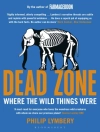What happens when a critique of modernity—a ‘revolt against the traditions of the Western world’—is situated within a non-European context, where the concept of the modern has been inevitably tied to the image of the West?
Seiji M. Lippit offers the first comprehensive study in English of Japanese modernist fiction of the 1920s and 1930s. Through close readings of four leading figures of this movement— Akutagawa, Yokomitsu, Kawabata, and Hayashi—Lippit aims to establish a theoretical and historical framework for the analysis of Japanese modernism.
The 1920s and 1930s witnessed a general sense of crisis surrounding the institution of literature, marked by both the radical politicization of literary practice and the explosion of new forms of cultural production represented by mass culture. Against this backdrop, this study traces the heterogeneous literary topographies of modernist writings. Through an engagement with questions of representation, subjectivity, and ideology, it situates the disintegration of literary form in these texts within the writers’ exploration of the fluid borderlines of Japanese modernity.
Inhoudsopgave
Introduction: Fissures of Japanese Modernity
1. Disintegrating Mechanisms of Subjectivity: Akutagawa Ryunosuke’s Last Writings
2. Topographies of Empire: Yokomitsu Riichi’s Shanghai
3. Mapping the Space of Mass Culture: Kawabata Yasunari’s Scarlet Gang of Asakusa
4. Negations of Genre: Hayashi Fumiko’s Nomadic Writing
5. A Phantasmatic Return: Yokomitsu Riichi’s Melancholic Nationalism
Over de auteur
Seiji M. Lippit is assistant professor in the department of East Asian languages and cultures at the University of California, Los Angeles. He is the editor of
Essential Akutagawa.












